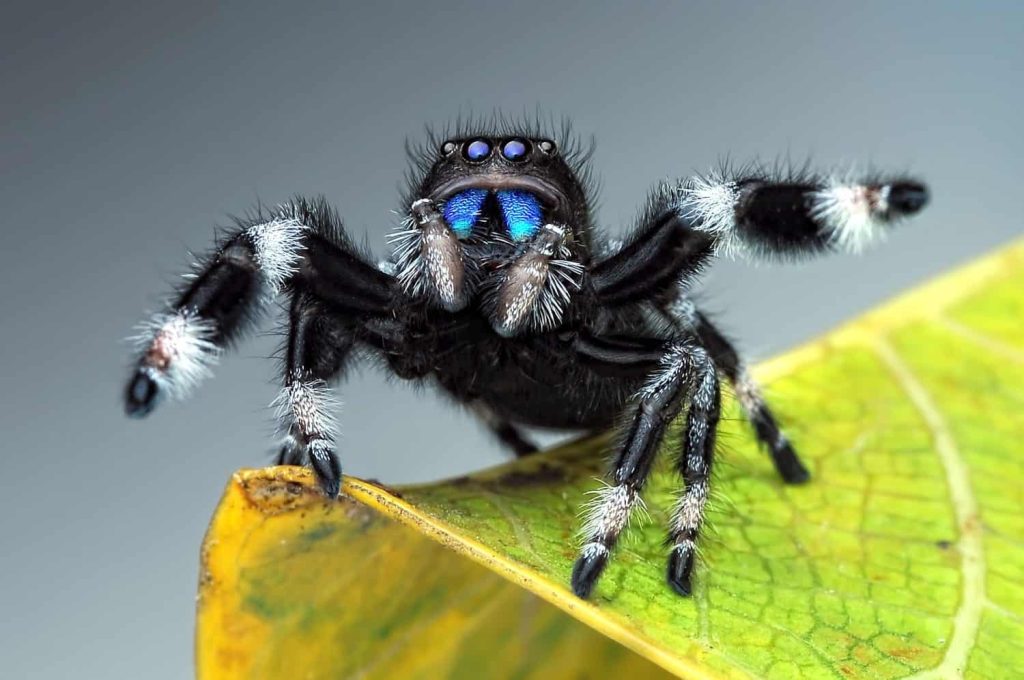Unraveling the Web of Spider Myths: From Fear to Fascination
Spiders, with their eight legs and often-hidden presence, have long been the subject of fear and misunderstanding. Myths about these fascinating creatures abound, painting them as dangerous night-time intruders that lurk in our bedrooms and devour their mates. But a closer look at the world of arachnids reveals a vastly different reality, one filled with intricate behaviors, remarkable adaptations, and a surprising level of vulnerability. Dr. Jerome Rovner, a spider expert, helps us debunk some of the most common spider myths and replace fear with a newfound appreciation for these often-maligned creatures.
Swallowing Spiders and Marital Cannibalism: Separating Fact from Fiction
One of the most pervasive spider myths is the idea that humans unknowingly swallow up to eight spiders a year while sleeping. This notion is pure fiction, according to Dr. Rovner. Spiders have no interest in venturing into human beds, let alone our mouths. They prefer secluded environments where they can hunt undisturbed and avoid becoming prey themselves. Another myth portrays female black widow spiders as inherently cannibalistic, devouring their mates after copulation. While this behavior has been observed in laboratory settings, it is rare in the wild. Only a few black widow species exhibit this behavior under natural conditions, and even then, it is not the norm.
Spiders: More Defensive Than Dangerous
The perception of spiders as inherently dangerous is another common misconception. While almost all spiders possess venom, the vast majority use it solely to subdue their prey. Of the over 52,000 known spider species, only a tiny fraction pose a threat to humans. Even medically significant species like the black widow and brown recluse are not aggressive and typically bite only when they feel threatened. Contrary to Hollywood portrayals, spiders do not actively seek to attack humans; their bites are almost always a defensive response to accidental contact.
Spiders, Arachnids, and Daddy Long-Legs: Clarifying Classifications
Often confused with insects, spiders belong to a distinct class of arthropods known as arachnids. Arachnids, characterized by their four pairs of legs, lack of antennae and wings, and two-segmented body, encompass a diverse group including scorpions, ticks, mites, and daddy long-legs, in addition to spiders. The term “daddy long-legs” itself is a source of confusion, referring to both harvestmen (which are not spiders) and cellar spiders (which are). Harvestmen lack venom glands entirely, dispelling the myth that they are highly venomous.
Relocation and Misguided Kindness: A House Spider’s Dilemma
Well-intentioned individuals often relocate house spiders outdoors, believing they are returning them to their natural habitat. However, this act of perceived kindness can be a death sentence for these spiders. True house spiders are adapted to indoor environments and may not survive outside. They rely on the specific conditions found within homes, such as moisture, secluded spaces, and readily available food sources. Relocating them often disrupts their established territory and exposes them to unfamiliar and potentially hostile environments.
Unveiling the Secrets of Spider Behavior: REM Sleep, Web Vibrations, and Ballooning
Recent research has shed light on the complex and fascinating behaviors of spiders. Studies on jumping spiders have revealed evidence of REM sleep, suggesting that they may even experience dreams. These findings challenge the assumption that REM sleep is exclusive to mammals and birds. Spiders also possess an extraordinary ability to “hear” through their webs. By adjusting their body posture, they can tune into different frequencies of sound transmitted as vibrations across their silken creations. Ballooning, a behavior in which spiders release silk threads to ride air currents, has also been shown to involve the sensing of electronic fields, adding another layer of complexity to this remarkable dispersal strategy.
Courtship Rituals and Maternal Care: The Softer Side of Spiders
The world of spiders extends beyond predation and survival; it encompasses intricate courtship rituals and dedicated maternal care. The peacock jumping spider, for example, performs elaborate dances to impress potential mates, risking being eaten if their performance falls short. Wolf spider mothers carry their young on their backs for several weeks after hatching, providing protection and ensuring their survival. These examples highlight the diverse behaviors and surprising tenderness found within the arachnid world.
Confronting Fear and Embracing Understanding: Changing Perceptions of Spiders
Fear of spiders, or arachnophobia, often stems from early childhood experiences, influenced by the reactions of others or depictions in media. However, a closer look at these creatures reveals a world of intricate beauty and remarkable adaptations. By understanding their behaviors and ecological roles, we can begin to dispel the myths and appreciate the wonders of the spider world. These creatures are not monsters to be feared, but rather fascinating and integral components of the natural world, deserving of our respect and protection.


